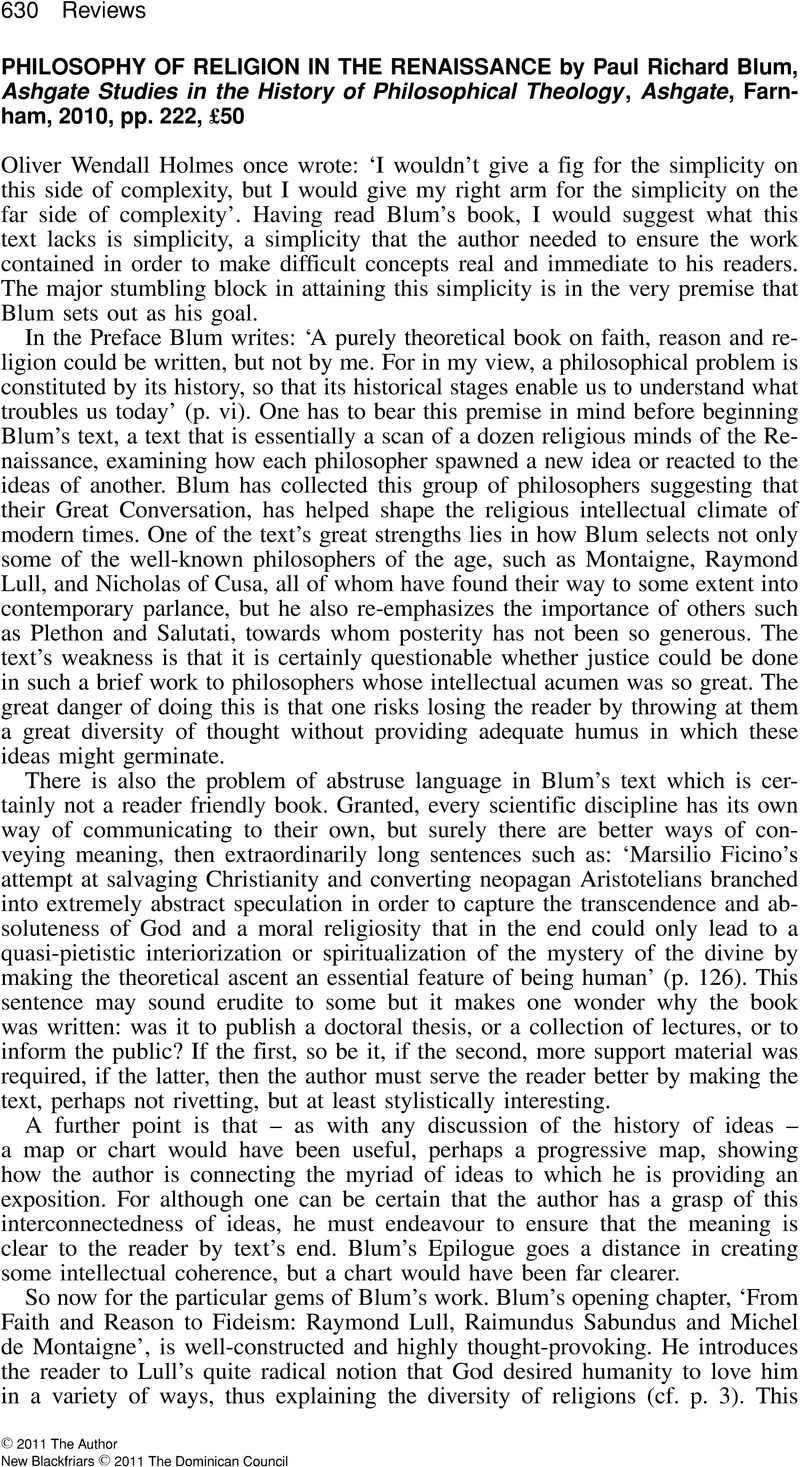No CrossRef data available.
Article contents
Philosophy of Religion in The Renaissance by Paul Richard Blum, Ashgate Studies in the History of Philosophical Theology, Ashgate, Farnham, 2010, pp. 222, £50
Review products
Philosophy of Religion in The Renaissance by Paul Richard Blum, Ashgate Studies in the History of Philosophical Theology, Ashgate, Farnham, 2010, pp. 222, £50
Published online by Cambridge University Press: 01 January 2024
Abstract
An abstract is not available for this content so a preview has been provided. Please use the Get access link above for information on how to access this content.

Information
- Type
- Reviews
- Information
- Copyright
- Copyright © 2011 The Author. New Blackfriars © 2011 The Dominican Council.

